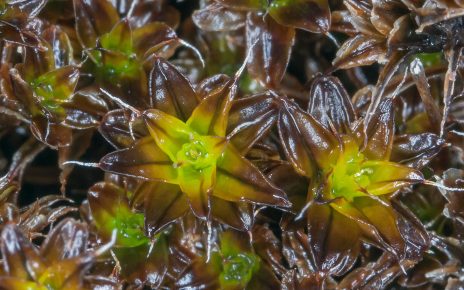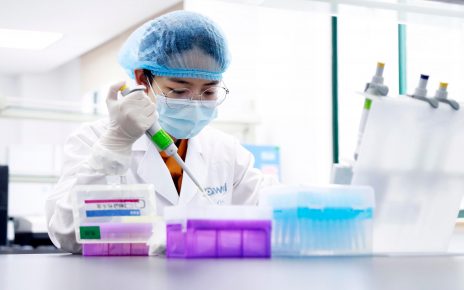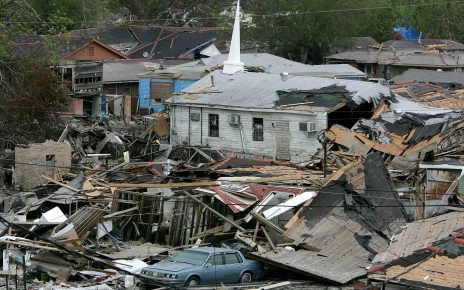Thirty years ago a team of NASA astronauts tipped the Hubble Space Telescope out of a space shuttle’s cargo bay and into low-Earth orbit. High above our planet’s starlight-smearing atmosphere, Hubble could study phenomena across the cosmos that ground-based observatories could never hope to see. It was not the first space telescope, but it is by far the longest-lived and most productive—thanks in large part to an innovative design that allowed Hubble to be visited, repaired and upgraded. Today it has irreversibly transformed astronomy, leading not only to profound new discoveries about the universe but also to plans for even more ambitious space telescopes.
Although Hubble’s eyes are more than 500 kilometers above Earth, its heart is arguably in Baltimore: in the halls, offices and conference rooms of the Space Telescope Science Institute, where the observatory’s science operations take place. To help commemorate Hubble’s three decades of discovery, Scientific American spoke with the institute’s director Ken Sembach about the telescope’s most revolutionary discoveries, its operations during the coronavirus pandemic and how much longer it might last.
[An edited transcript of the interview follows.]
What is your relationship to Hubble as the director of the Space Telescope Science Institute?
I’m responsible for the science operations of Hubble, as well as the other work that we do there like the science and the flight operations of the upcoming James Webb Space Telescope [JWST] and the running of the Mikulski Archive for Space Telescopes. So Hubble is one component of the work the Institute does. I have a great team of people, led by a mission office that is responsible for the day-to-day Hubble operations we do there.
What is the most fun part of your job when it comes to Hubble?
I get a lot of satisfaction out of seeing the whole Hubble team working together to make a great science idea become something spectacular. That’s fun. But so is something else—a perk that comes along with my position. It’s called “director’s discretionary time.” And this is something that gives me up to 10 percent of the telescope’s time to use as I choose—usually for particularly important observations that may be too time-sensitive or too ambitious to get through the usual channels for allocating the telescope’s time. Sometimes these are just things that everyone recognizes we need, but they aren’t right at the cutting edge, they aren’t brand-new and shiny—fundamental matters of basic science that have to be done to build up to the tip-top of the peak that everyone wants to get to.
Some of Hubble’s greatest successes that have really moved the field forward over the years resulted from director’s discretionary time. The best examples of that, I think, are the Deep Fields. The first Hubble Deep Field, the Ultra Deep Field that followed, the Frontier Fields that followed that—they all basically came out of the director at the time saying, “This is important enough and revolutionary enough to do. And even though others may disagree with me, we’re going to go forward and do it on behalf of the community.”
So, for instance, I’ve used my director’s time to just start something called ULLYSES—the Ultraviolet Legacy Library of Young Stars as Essential Standards. This will be the largest Hubble program ever executed. And across 1,000 of the telescope’s orbits around Earth, it will bring the observatory’s unique ultraviolet imaging and spectroscopy to bear on the question of how stars form. Paired with other observations from current and upcoming facilities such as Gaia, ALMA [Atacama Large Millimeter/submillimeter Array] and [JWST], this could let us finally capture and unravel the details of star formation that we haven’t been able to access before. If we don’t understand star formation in a decade—with this program, with all these amazing facilities coming along—we’re probably never going to understand it.
And none of those ultraviolet observations could be done with something besides Hubble?
That’s right. You wouldn’t be able to do it. You can’t get ultraviolet from the ground-based observatories, because the atmosphere of Earth blocks that light. So you need a space telescope to do it. And right now Hubble is the only one that’s capable of providing that kind of information. [JWST] and its planned follow-on, an observatory called WFIRST [Wide Field Infrared Survey Telescope], are both in infrared, so they can’t do it. Right now only Hubble sees this kind of light, barring a few minor exceptions that come nowhere close to Hubble’s capabilities. So when Hubble goes, we could be blind to the ultraviolet universe. Right now, even though we are 30 years into its life, I really think, for Hubble, the best is yet to come.
Really? What’s the “best” that might be coming? And how much longer could Hubble last anyway?
One lesson of the past three decades is that Hubble always surprises us with new and interesting things wherever it looks. It is a key contributor to the tremendous rate of increase in our knowledge about the universe that we have seen in recent years. And the more we learn, the more we learn that we need to learn more—which is, in part, why we still have such incredible demand. We still receive more than 1,000 proposals every year from researchers around the world hoping to use Hubble to study everything from solar system objects to things at the edge of the visible universe.
Being realistic, I think Hubble’s got a good five years left. And we’re operating the observatory in a way meant to keep it scientifically productive out to 2025. Does this mean we’ll get to 2025? No, something could go wrong tomorrow—this is the space business, after all. But, then again, maybe we could get to 2030. Hubble has a lot of built-in redundancy. And it has been visited, repaired and upgraded by astronauts five times throughout its life. Each of those servicing missions rejuvenated the observatory and gave it new capabilities—better electronics, better mechanical components, better detectors, things like that. The fact that most of those new things haven’t failed, that means they’re past their infant mortality phase. They could go another 10 or 15 years. Most of Hubble is quite healthy. What worries me are certain things original to the observatory such as the fine-guidance sensors and electronics. They’ve been bathing in cosmic radiation every day for 30 years. Eventually, that takes its toll.
As for the transformative things Hubble could still do: For one thing, Hubble could have a big impact on multimessenger astronomy—where you’re using gravitational-wave observatories to detect things such as merging black holes and neutron stars and then studying those things with other, more traditional facilities. This is a research area that is opening up an entirely new window on the most massive and energetic events that occur the universe, the things that ripple the very fabric of spacetime. Hubble can help immensely to tell us what went bump in the night, what actually collided or coalesced to cause those ripples.
Also, there is still one of the original problems that Hubble was designed to help solve, which is determining how fast the universe is expanding—something called the Hubble constant. Right now there is a growing tension between measured values of the Hubble constant, between those based on the cosmic microwave background and those based on observing the relatively nearby universe using supernovae. The observatory has helped to drill down on the value of the Hubble constant in the nearby universe to 10 percent precision, as was originally promised. Then we got it to 3 percent. Now we’re working to get it to 1 percent. We may soon get to the point where the tension between these two sets of estimates is such that it really requires entirely new types of physics to describe what’s going on. Maybe there’s another flavor of neutrinos out there. Discovering something like that would be huge.
And with [JWST] coming along, let’s remember that everything people will look at with [JWST], they’ll want to look at with Hubble, too, to get a more complete picture while the two observatories are both operationally overlapping. Studies of star formation, the first galaxies, exoplanets—all will benefit from these two observatories working together.
So all these things lead me to believe that Hubble’s best years are yet to come.
Do you think NASA should consider another servicing mission?
It’s certainly something worth looking at. There is no obvious successor for Hubble’s capabilities in ultraviolet and really blue optical light in the near future—for the 2020s and perhaps the 2030s. If Hubble really does end in 2025, we might have a gap of 10, 15, maybe even 20 years before another big telescope can come online with those kinds of capabilities. And how damaging would that be to the field? You’re going to want Hubble or something like it to synergize with the observations of so many other planned future missions.
You know, I would never bet against Hubble. But there are many facets to consider in terms of the potential cost-benefit associated with any potential Hubble refurbishment. Trades would have to be made. I would say it would be short-sighted to slam that door shut. But it would also be cavalier to say “Let’s go and do it” without carefully thinking it through.
The coronavirus pandemic is obviously posing challenges for every aspect of society. Is it impacting Hubble operations?
Well, it’s hard to put Hubble in the context of something so enormous that is happening to everybody around the globe. But we are fortunate to have been fairly well prepared for this, because for years, we’ve been downsizing, streamlining and automating operations as a way of saving money and increasing efficiency. So we can ensure the science keeps flowing and Hubble’s operations can continue while most of our team works from home. We do have some personnel on-site to upload commands to the telescope. Whereas for ground-based observatories, where people must be on-site, doing real hands-on things, it’s much more difficult to keep them operational right now. So Hubble is filling a bit of a void with observations for the community during this whole pandemic period. And we’re proud and happy to be able to do that. We’re delighted to be able to deliver inspirational scientific results that give people a little bit of a bright spot in what may be otherwise dark times.

(1)-531x642.jpg)


